If you want to know about the egyptian architecture or roman architecture or indus valley civilization, please click the link.
The classical orders of architecture refer to the styles of columns and entablatures used in ancient Greek and Roman architecture, and later adopted during the Renaissance.
- An order is a logical or methodical arrangement of components parts such that proper functioning, appearance or harmony is achieved.
- The system of rules relating to the shape and proportions of the classic architecture.
- The ancient styles of classical architecture, each distinguished by its proportions, mouldings and details, and most readily recognizable by the type of column employed.
- The Doric is the oldest and simplest.
- The Ionic and Corinthian orders were more developed with elaborate schemes for the column’s capital and the entablature also differs in each case.
- The architectural orders determined the major features of an ancient Greek temple façade. A temple façade was made up of three (3) main parts;
- The steps
- Columns
- Entablature (the horizontal part that rested on the columns)

Each of these three main parts also had three (3) distinguishing parts;
- The steps – it has three major steps leading into the temple, the topmost is called the stylobate.
- The columns – each column consisted of: i) Base, ii) Shaft and iii) Capital.
- The entablature – it consisted of: i) Architrave – plain horizontal beam resting on the column, ii) Frieze – it corresponds to the beams supporting the ceilings and iii) Cornice – a set of decorative mouldings that overhung the parts below.
1) Classical Columns
- A column in classical architecture consists of a shaft, base and a capital.
- The capital serves as a visual and structural transition between the vertical shaft and the horizontal wall of masonry for the entablature under the roof.
- Several columns are placed in line in most cases so as to form a colonnade.
- The ancient Greece developed three (3) distinctive, carefully proportioned styles of columns – the Doric, Ionic and Corinthian orders.
i) Doric Order
- Oldest and simplest
- It has no base, and the heavy shaft is tapered upward to the capital.
- Originated 7th Century B.C.E
- Perfected during 5th Century B.C.E.
- Developed in the Western Dorian region of Greece
- Represents strength and masculinity

- The Doric order is characterized by a slightly tapered column that is the most squat of all the orders, measuring in height (including the capital) only about four to eight lower diameters.
- The Greek forms of the Doric order have no individual base and instead rest directly on the stylobate, although subsequent forms of Doric frequently were given a conventional plinth-and-torus base.
- The Doric shaft is channelled with 20 shallow flutes.
- The capital, as stated before, consists of a simple necking; a spreading, convex echinus; and a square abacus.
- The frieze section of the Doric entablature is distinctive.
- The Roman forms of the Doric order have smaller proportions and appear lighter and more graceful than their Greek counterparts.
- Short and wide shafts
- No base
- 20 Flutes
- Square abacus
- Tapering echinus
- No carvings or decorations on the capital
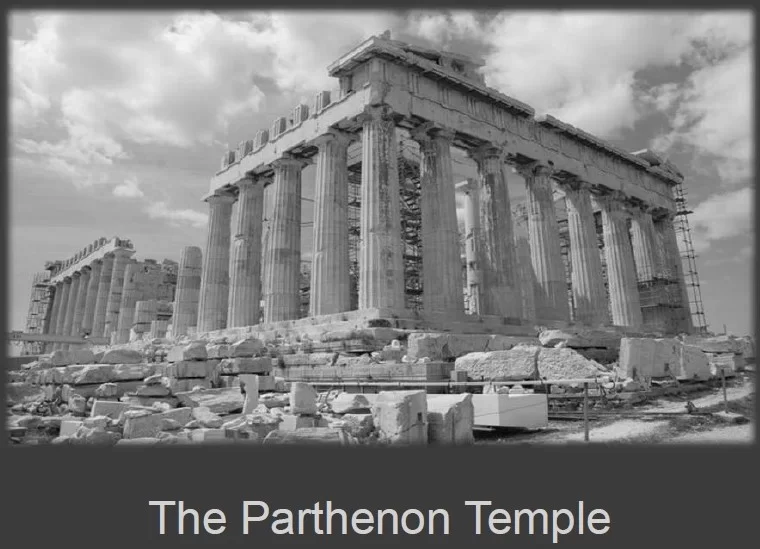
ii) Ionic Order
- The Ionic style is thinner and more elegant. Its capital is decorated with a scroll-like design (a volute). This style was found in eastern Greece and the islands.
- Elegant scroll-type Capital
- 6th Century B.C.E.
- Originated in Ionia
- Feminine characteristics

- The Ionic order differs from the Doric in having more flutes on its shaft and in the scrolls, or volutes, that droop over the front and rear portions of the echinus in the capital.
- The echinus itself is carved with an egg-and-dart The height of the entire Ionic order—column, base, capital, and entablature— is nine lower diameters.
- The base of the column has two tori (convex moldings) separated by a scotia.
- The shaft, which is eight lower diameters high, has 24 flutes. On the entablature, the architrave is usually made up of three stepped fasciae (bands).
- Stands on pedestal
- Shafts usually had 24 flutes, but not always with fillets
- Volutes decorate the capital
- Examples of Ionic temples are: the Erechteion, Athens; archaic Temple of Artemis, Ephesus; Temple of Athena Nike, Athens; Temple of Ilissus, Athens.

iii) Corinthian Order
- The Corinthian style is seldom used in the Greek world, but often seen on Roman temples. Its capital is very elaborate and decorated with acanthus leaves
- Most exquisite and decorated of the three Orders
- 4th Century B.C.E.
- Not used much by the Greeks
- Named after the City of Corinth
- Created to represent a maiden
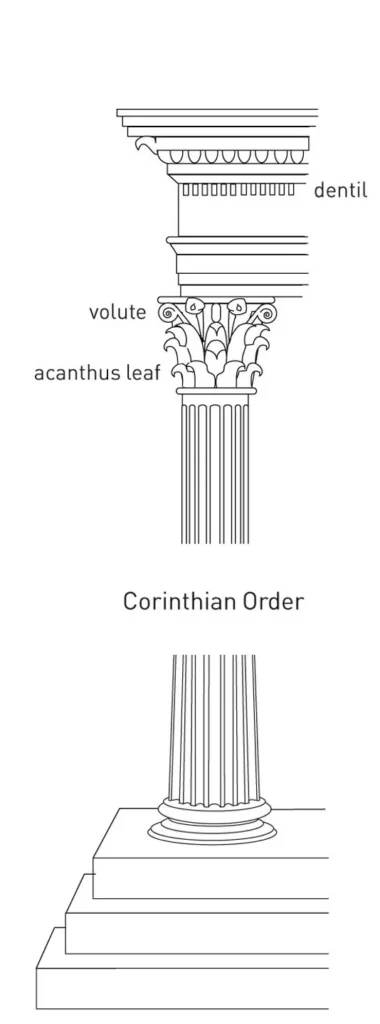
- The Corinthian order is the most elegant of the five orders.
- Its distinguishing characteristic is the striking capital, which is carved with two staggered rows of stylized acanthus leaves and four scrolls.
- The shaft has 24 sharp-edged flutes, while the column is 10 diameters high.
- Base and shaft similar to Ionic
- Decorated with acanthus leaves and anthemion ornaments
- Outward flare suggest sense of light
- Examples of Corinthian temples are: Temple of Zeus, Athens.

- The Romans added two (2) types of columns to the classical orders;
- Tuscan Order – It is an unfluted modification of the Doric column.
- Composite Order – It had the Ionic shaft and a more ornate Corinthian capital.
iv) Tuscan Order
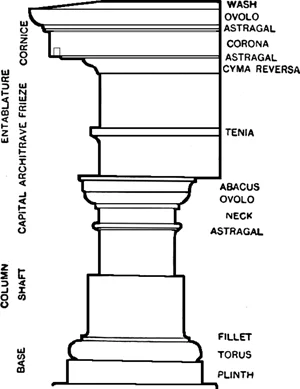
- The Tuscan order is a Roman adaptation of the Doric.
- The Tuscan has an unfluted shaft and a simple echinus-abacus capital.
- It is similar in proportion and profile to the Roman Doric but is much plainer.
- The column is seven diameters high. This order is the most solid in appearance of all the orders.
v) Composite Order
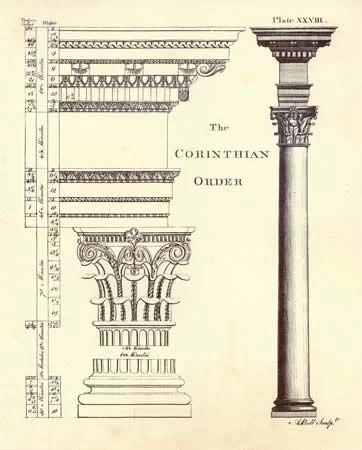
- The Composite order, which was not ranked as a separate order until the Renaissance, is a late Roman development of the Corinthian.
- It is called Composite because its capital is composed of Ionic volutes and Corinthian acanthus-leaf decoration.
- The column is 10 diameters high.
Examples

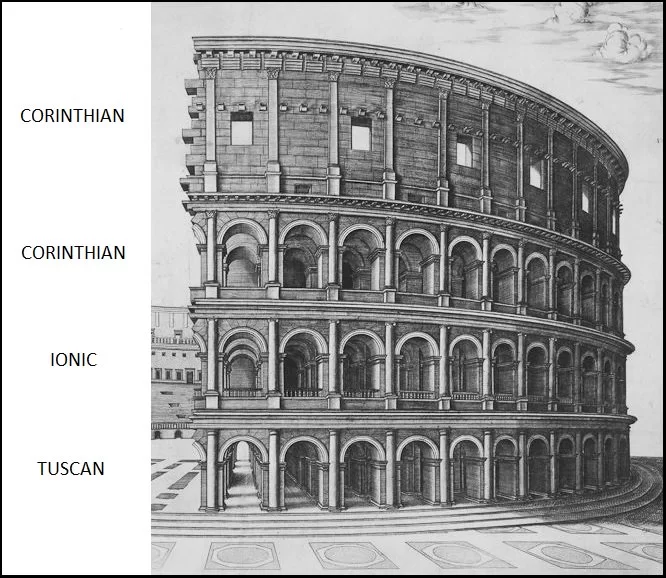
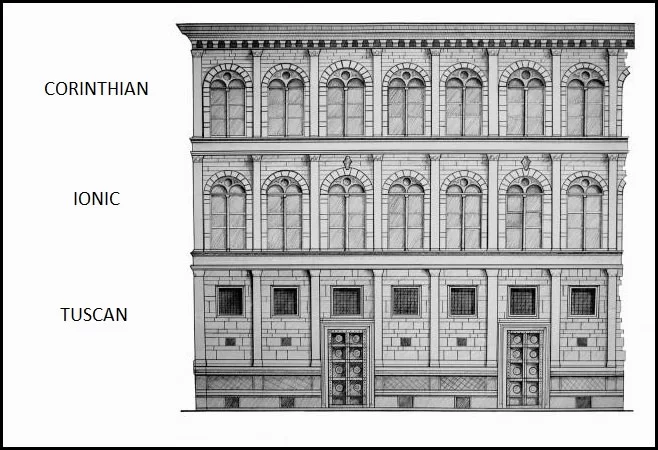
Overall, the classical orders continue to influence architectural design to this day, and many of the principles established by the ancient Greeks and Romans can still be seen in modern architecture.